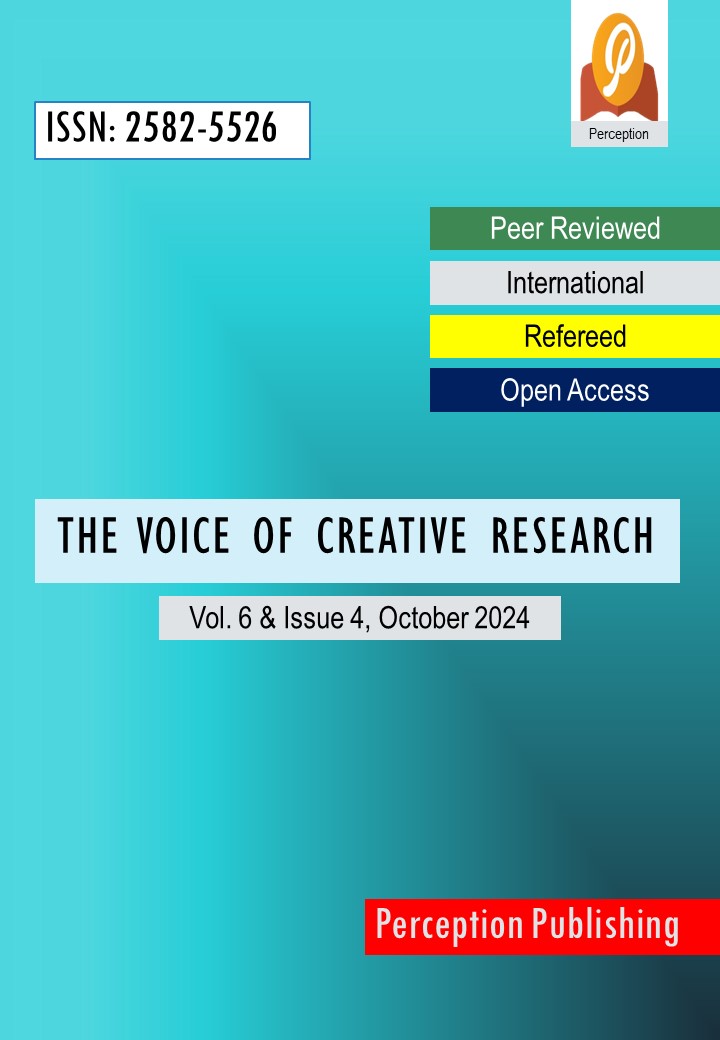The Tirupati Laddu Controversy: Fake News, Political Fallout, and the Role of Misinformation
DOI:
https://doi.org/10.53032/tvcr/2024.v6n4.08Keywords:
Controversy, Misinformation, Religious, Digital age, Fact-checkingAbstract
This courtier, falsehood about some animal fat contained in the holy prasadam, has been put in public light by its effect on devotees and, to some extent, the general public. An in-depth investigation reveals that the viral spread of fake news across social media platforms did much to send the entire issue into overdrive. This study takes the Tirupati Laddu case as an example to analyze the genesis and propagation of fake news, exploring reasoning’s underpinning its emergence. Content analysis and social media analytics shall address the study on the distribution mechanisms for online disinformation along with an analysis of social media's role in diffusing misinformation in terms of impact on cultural and religious communities. Also, this study delineates how temple administrations, government agencies, and media institutions respond to disinformation in seeking to restore public faith. This would provide an insight into how to deal with fake news and erudition towards supporting social and religious cohesion in the digital age, with emphasis on the need for collaborative information distribution and effective fact-checking processes.
References
Anderson, & Rainie. (2017). The future of truth and misinformation online.
Apparasu, S. R. (2024). Tirupati laddu: A centuries-old tradition in the eye of the storm. Hindustan Times.
Chadwick, A., Vaccari, C., & Kaiser, J. (2022). The Amplification of Exaggerated and False News on Social Media: The Roles of Platform Use, Motivations, Affect, and Ideology. American Behavioral Scientist, 000276422211182. https://doi.org/10.1177/00027642221118264
Flynn, D. J., Nyhan, B., & Reifler, J. (2017). The Nature and Origins of Misperceptions: Understanding False and Unsupported Beliefs About Politics. Political Psychology, 38(S1), 127–150. https://doi.org/10.1111/pops.12394
Ghosh, D. (2018). Disinformation Is Becoming Unstoppable. Public Interest Technology.
Guess, A., Nagler, J., & Tucker, J. (2019). Less than you think: Prevalence and predictors of fake news dissemination on Facebook. Science Advances, 5(1), eaau4586. https://doi.org/10.1126/sciadv.aau4586
Ha, L., Andreu Perez, L., & Ray, R. (2021). Mapping Recent Development in Scholarship on Fake News and Misinformation, 2008 to 2017: Disciplinary Contribution, Topics, and Impact. American Behavioral Scientist, 65(2), 290–315. https://doi.org/10.1177/0002764219869402
Hindus for Human Rights. (2024). The Tirumala Tirupati Laddu Controversy: Faith, Food, and Political Maneuvering. In Hindus for Human Rights.
Kim, J., Tabibian, B., Oh, A., Schölkopf, B., & Gomez-Rodriguez, M. (2018). Leveraging the Crowd to Detect and Reduce the Spread of Fake News and Misinformation. Proceedings of the Eleventh ACM International Conference on Web Search and Data Mining, 324–332. https://doi.org/10.1145/3159652.3159734
Kümpel, A. S., Karnowski, V., & Keyling, T. (2015). News Sharing in Social Media: A Review of Current Research on News Sharing Users, Content, and Networks. Social Media + Society, 1(2), 2056305115610141. https://doi.org/10.1177/2056305115610141
Lazer, D. M. J., Baum, M. A., Benkler, Y., Berinsky, A. J., Greenhill, K. M., Menczer, F., Metzger, M. J., Nyhan, B., Pennycook, G., Rothschild, D., Schudson, M., Sloman, S. A., Sunstein, C. R., Thorson, E. A., Watts, D. J., & Zittrain, J. L. (2018). The science of fake news. Science, 359(6380), 1094–1096. https://doi.org/10.1126/science.aao2998
Levin, S. (2017). Facebook promised to tackle fake news. But the evidence shows it’s not working. Support the Guardian.
Lewandowsky, S., & Van Der Linden, S. (2021). Countering Misinformation and Fake News Through Inoculation and Prebunking. European Review of Social Psychology, 32(2), 348–384. https://doi.org/10.1080/10463283.2021.1876983
Mark Zuckerberg, & Sam. (2017). I regret ridiculing fears over Facebook’s effect on election | technology | the guardian. Huffpost.
Miró-Llinares, F., & Aguerri, J. C. (2023). Misinformation about fake news: A systematic critical review of empirical studies on the phenomenon and its status as a ‘threat.’ European Journal of Criminology, 20(1), 356–374. https://doi.org/10.1177/1477370821994059
Molina, M. D., Sundar, S. S., Le, T., & Lee, D. (2021). “Fake News” Is Not Simply False Information: A Concept Explication and Taxonomy of Online Content. American Behavioral Scientist, 65(2), 180–212. https://doi.org/10.1177/0002764219878224
Mrah, I. (2017). Developing Higher Order Thinking Skills: Towards a Rethinking of EFL Coursebooks in Moroccan High Schools. Journal of English Language Teaching and Linguistics, 2(3), 225. https://doi.org/10.21462/jeltl.v2i3.79
Orlando. (2017). How to Help Kids Navigate Fake News and Misinformation Online. The Conversation. http://theconversation.com
O’Sullivan, D. (2005). Cultural politics and Irish education since the 1950’s: Policy paradigms and power. Institute of Public Administration.
Patnaik, N. (2021). Geographical Indications Protection In India: Case Study Analysis On ‘Tirupati Laddu.’ Indian Journal of Law and Legal Research, 3(1).
Pennycook, G., Binnendyk, J., Newton, C., & Rand, D. G. (2021). A Practical Guide to Doing Behavioral Research on Fake News and Misinformation. Collabra: Psychology, 7(1), 25293. https://doi.org/10.1525/collabra.25293
Petersen, Osmundsen, & Arceneaux. (2020). The “need for chaos” and motivations to share hostile political rumors.
Scheufele, D. A., & Krause, N. M. (2019). Science audiences, misinformation, and fake news. Proceedings of the National Academy of Sciences, 116(16), 7662–7669. https://doi.org/10.1073/pnas.1805871115
Scott, B. (2018). Disinformation Is Becoming Unstoppable. The Center for Internet and Society (CIS). https://cyberlaw.stanford.edu/publications/disinformation-becoming-unstoppable/
Singh, V. (2024). Tamil Nadu’s AR Dairy, Not Amul Supplied Adulterated Ghee to Tirupati Temple. In ONLY FACT. https://onlyfact.in/tamil-nadus-ar-dairy-not-amul-supplied-adulterated-ghee-to-tirupati-temple/
TOI News Desk. (2024). One nation, One mom: Congress takes dig at viral Tirupati Laddu tweets amid prasad row. TIMES OF INDIA. https://timesofindia.indiatimes.com/india/one-nation-one-mom-congress-takes-dig-at-viral-tirupati-laddu-tweets-amid-prasad-row/articleshow/113541886.cms
Vicario, M. D., Quattrociocchi, W., Scala, A., & Zollo, F. (2019). Polarization and Fake News: Early Warning of Potential Misinformation Targets. ACM Transactions on the Web, 13(2), 1–22. https://doi.org/10.1145/3316809
Vosoughi, S., Roy, D., & Aral, S. (2018). The spread of true and false news online. Science, 359(6380), 1146–1151. https://doi.org/10.1126/science.aap9559
WEF: Global Risks 2013. (2013). [Online post]. World Economic Forum.
Downloads
Published
How to Cite
Issue
Section
License
Copyright (c) 2024 The Voice of Creative Research

This work is licensed under a Creative Commons Attribution-NonCommercial 4.0 International License.




